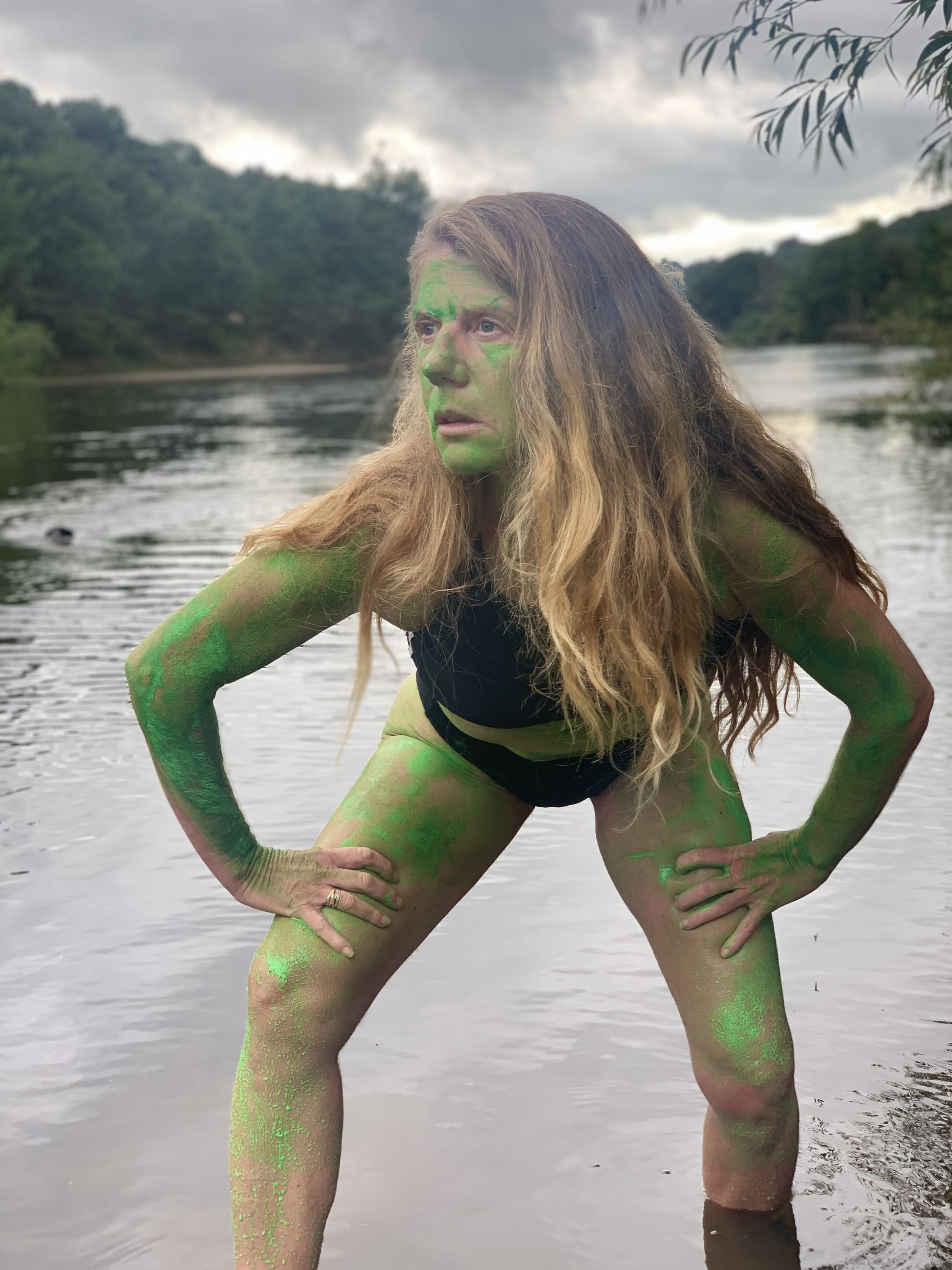My name is Angela Jones. I’m known as the wild woman of the Wye. I can be seen in the river every day. For over 35 years the Wye is my office, my playground and my life.
I have been in several TV documentaries and many magazine articles sharing my passion for this beautiful river.
Through my business, Swim Wild Wye I spend every day swimming the Wye all year round (up to 40 hours a week through the summer). I take people swimming and show them how to respect and appreciate what the Wye has to offer in a safe and controlled way. I teach them about the beauty above and below the surface while not impacting on the environment. They leave with respect and knowledge of this river.
I cover over 86 miles of the majestic river Wye and much of my playtime is beneath the surface watching and appreciating the diversity and wildlife. I have been monitoring closely above and below the water over the past decades, and particularly the last five years have witnessed and seen an increase in farming pollution, slurry discharge, water extraction for irrigating farm fields, contamination from chemical crop sprays and industries, and even contamination from raw sewage entering the river after heavy rain.
I see and taste the pollutants first hand. They starve this majestic river of its inherent goodness, causing loss of diversity and species, and in turn leading to decline of habitat for wildlife. Climate change and increased water temperatures are lowering water levels, and extreme floods are also drastically affecting the wellbeing of our wonderful Wye!
I’ve also witnessed a huge increase in plastic pollution, which comes from businesses, tourists and locals, and is pitiful to see it clogging up the river.
There are many people who care for the Wye but alas, too many who take, without a thought of the effect on this treasured gem, whose veins support the ecological biodiversity to so many species.
Over the past three or four years I have witnessed an increase in green algae. There are now serious concerns over the permanently damaging effects these severe algal blooms are having on the ecology of this highly protected river. The proportion of phosphate in the Wye from agriculture has doubled in the past six years. The river is now failing its permitted levels of phosphate under the EU Habitats Directive.
The Wye is being starved and strangled by our appalling lack of respect and greed. The agencies that are out there to protect are failing badly.
WATER CROWFOOT WEED
I have been mapping the large sections of water crowfoot over the years and enjoying its beauty and the huge importance it has to the Wye. It is pitiful to see NO Water Crowfoot in over 90% of its former sections that I have logged over the years! Yes, NO Water Crowfoot.
This river is starved just like the Swans and Geese that feed on this plant.
It is illegal to remove this plant due to its SAC status yet we allow it to be lost to pollution. This is designated a European special area of conservation (SAC) under the European Habitats Directive and it is also regarded as one of the finest lowland landscapes in Britain.
The Water Crowfoot is a magnificent aquatic plant that blankets the Wye in large carpets through the summer months, it produces small white flowers and is a member of the buttercup family that add beauty to this river and one of the reasons it has a SAC status.
Water Crowfoot needs CLEAN water, its presence demonstrates the water is both alkaline and nutrient-rich giving another sign of how clean the river is. This beautiful plant can grow up 20 feet long and feeds our Swans and Geese.
Unique for stability in habitats which are of both national and international importance. The Wye sustains a high diversity of flora and fauna including species of conservation concern such as the water vole, European eel, and white-clawed crayfish. They also support the important salmonid game fish species, Atlantic Salmon and brown Trout.
The high biodiversity supported by the presence of Water Crowfoot results in the creation of more complex habitats within the river which, in turn, is linked to the abundant and diverse invertebrate communities that are present in our river by providing diverse food sources and refugia. For example, the submersed parts of macrophytes provide a large surface area for suspension-feeding invertebrates, such as black fly larvae and certain caddis fly larvae, to attach to and feed on organic particles.
The mosaic of macrophyte species provides suitable habitat for many different insects during their larval stage, such as damselflies and dragonflies. These macrophytes are the dominant in-river plant species throughout and are described as pioneer species for their ability to colonise a variety of habitats. High invertebrate production, in turn, generates large numbers of potential prey for juvenile salmonids, including mayfly and blackfly larvae. The absence of any naturally occurring large substrate in lowland streams for physical shelter also makes submerged macrophytes a fundamental requirement for juvenile salmonids; to reduce energy consumption and provide refuge from predators.
“I won’t stop bringing attention to this urgent matter and I will continue to shout until I am heard as giving up on this river is not an option!” Angela Jones, Swim Wild Wye.



